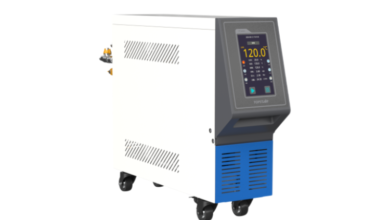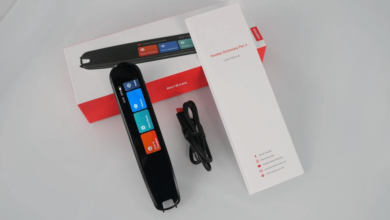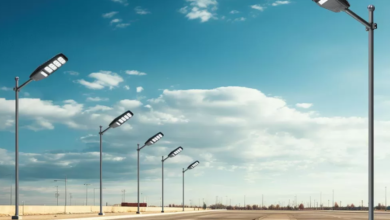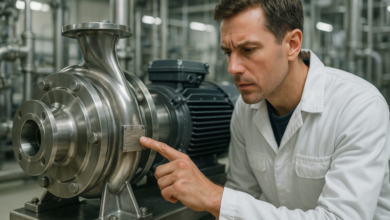Why Do Gmail Notifications Fail on Huawei Sometimes?

Many Huawei users notice that Gmail notifications occasionally stop working — emails arrive, but alerts don’t appear until the app is opened. This isn’t a Gmail bug; it usually results from Huawei’s background management system designed to save battery and data. Fortunately, it’s easy to fix with a few smart settings. Once configured properly, Huawei phones can deliver Gmail notifications instantly and consistently. This guide explains why these issues occur, how Huawei’s system manages background activity, and what you can do to keep Gmail running smoothly every day.
Common Reasons Gmail Notifications Stop Working
Background App Management Limits Gmail Sync
Huawei’s EMUI and HarmonyOS use intelligent battery management to extend device runtime. By default, they automatically close or restrict apps that run in the background, including Gmail. When that happens, Gmail’s sync process pauses, and notifications stop until you manually open the app again. To fix this, open Settings → Battery → App Launch. Find Gmail and turn off “Manage Automatically.” Then, enable Auto-launch, Secondary Launch, and Run in Background. This allows Gmail to stay active quietly in the background without being shut down. Once adjusted, new emails trigger notifications immediately. You can also pin Gmail in your Recent Apps view by swiping down on it, ensuring it remains open for real-time updates.
Battery Optimization Restricts Push Notifications
Battery optimization is another reason Gmail notifications may fail. Huawei’s system automatically restricts energy-intensive apps to extend power life. However, this can block Gmail’s push services. Go to Settings → Apps → Gmail → Battery, and select “Don’t Optimize.” This tells the system to allow Gmail to use normal background data even when your phone is idle. If you use Huawei’s built-in Email app for Gmail access, repeat the same process there. Turning off optimization ensures Gmail servers can push notifications instantly instead of waiting for manual refreshes. The effect is immediate — once you remove these restrictions, Gmail’s background service works continuously, just like other messaging apps.
Data Saver or Network Permissions Block Gmail Updates
Huawei devices include a Data Saver feature that limits background data usage. If Gmail isn’t whitelisted, it won’t refresh emails or show alerts when using mobile data. To solve this, open Settings → Mobile Data → Data Saver → Unrestricted Apps, and add Gmail to the list. Also, check Settings → Apps → Gmail → Mobile Data, and ensure both Wi-Fi and Mobile Data options are allowed. Another overlooked setting is Network Access Permissions. Go to Settings → Apps → Permissions → Gmail, and confirm it has permission to use network data in the background. Once these permissions are in place, Gmail will sync properly regardless of whether you’re on Wi-Fi or mobile data, restoring instant notifications for all incoming messages.
How to Fix and Prevent Gmail Notification Delays
Enable Gmail Sync and Check Account Settings
Gmail’s sync option must remain active for notifications to work. Open Gmail → Menu (three lines) → Settings → Your Account → Sync Gmail and confirm it’s turned on. Then go to Settings → Accounts → Gmail → Sync Account, and toggle “Sync Email” if it’s off. If multiple accounts are added, check each one individually. Gmail’s sync settings can vary per account, especially for business or school addresses. Lastly, open Settings → Date & Time, and enable Automatic Time Zone. Incorrect time settings can sometimes interrupt sync cycles. These small adjustments guarantee Gmail refreshes automatically without manual updates.

Clear Cache and Update the Gmail App
App cache buildup can slow Gmail’s notification system. Open Settings → Apps → Gmail → Storage, and tap Clear Cache (not Clear Data). This deletes temporary files while keeping your login details safe. Next, ensure you’re using the latest Gmail version. If you can’t access Google Play, you can download updates safely through Huawei’s AppGallery or Petal Search. Search for Gmail, choose a verified listing, and install the latest release. Each update includes performance improvements and bug fixes that improve syncing reliability. After updating, restart your phone to refresh all background services. Many users find that a simple restart after clearing cache resolves most notification issues.
See also: Building Engaging Learning Environments with EdTech Software
Allow Huawei System and Gmail Integration
Huawei’s intelligent system integrates deeply with its notification center. However, certain permissions may need to be enabled manually. Go to Settings → Notifications → App Notifications, find Gmail, and turn on all notification types — including Banners, Lock Screen, and Status Bar Alerts. Then, check Settings → Sounds & Vibration → Notification Sound, and assign an alert tone to Gmail so you don’t miss new messages. If you’re using the built-in Huawei Email app linked to Gmail, open it and confirm that Push Notifications are enabled under the app’s settings. This ensures you receive alerts both visually and audibly. These steps create a consistent notification environment, preventing Gmail alerts from being silenced or delayed.
Conclusion
Gmail notifications fail on Huawei devices mainly because of background restrictions, power-saving optimizations, and network limits. By adjusting battery management, enabling background data, and confirming sync permissions, users can restore full Gmail functionality quickly. To prevent future issues, keep the Gmail app updated, whitelist it under Data Saver, and regularly check that sync remains active. Huawei’s system gives users deep control over app behavior — when configured properly, Gmail delivers notifications instantly and reliably. Once set up, you can enjoy a perfectly synchronized and efficient email experience every day with gmail on huawei.





